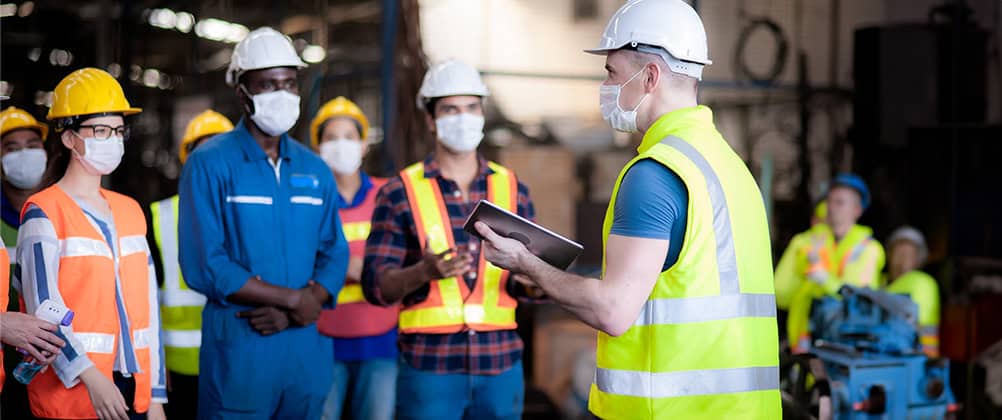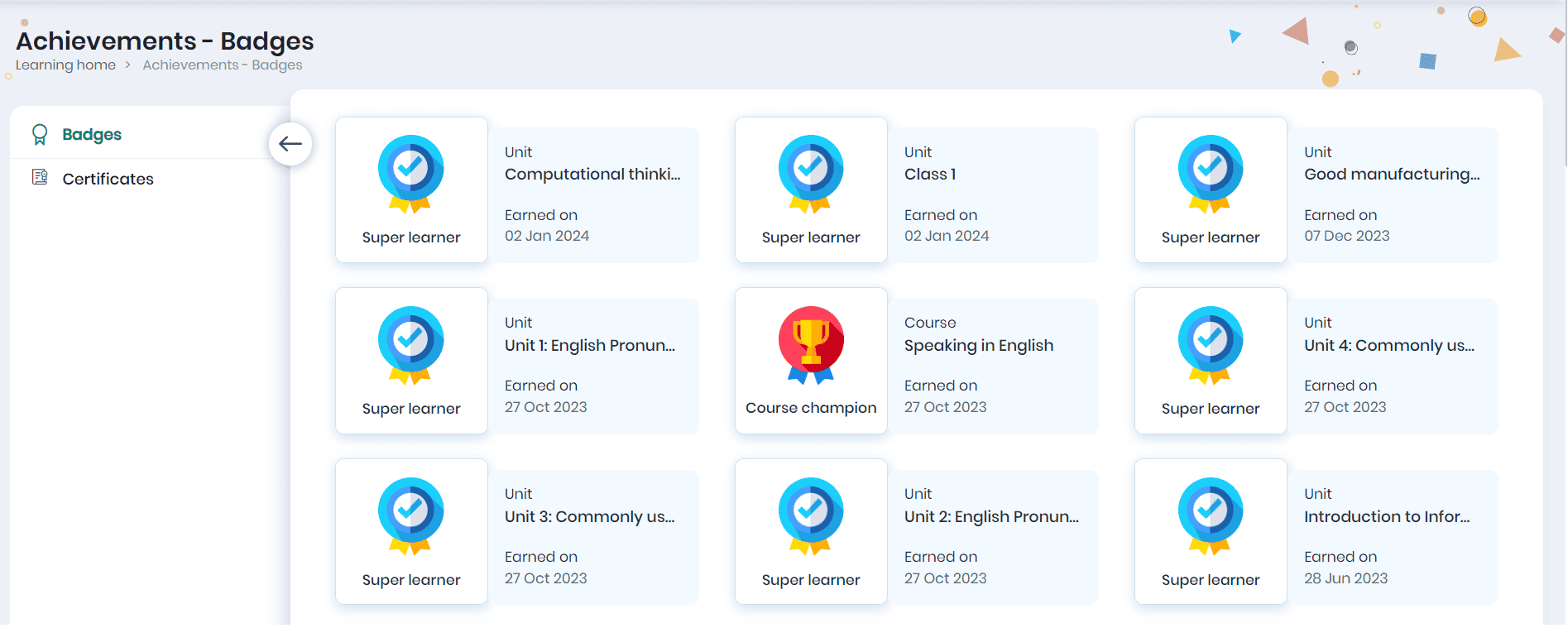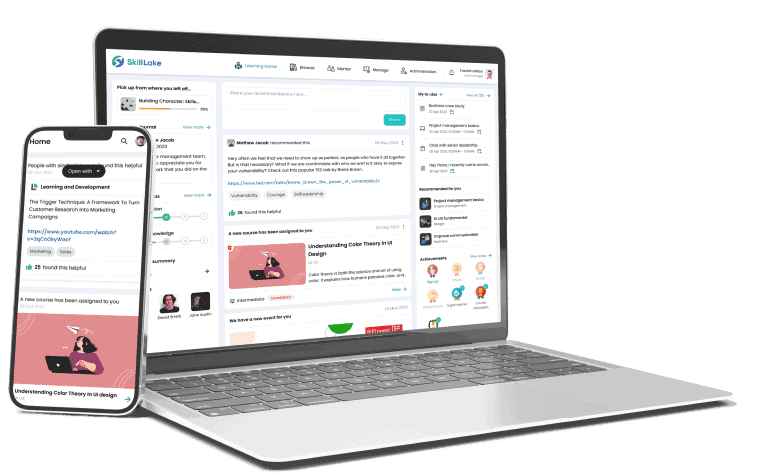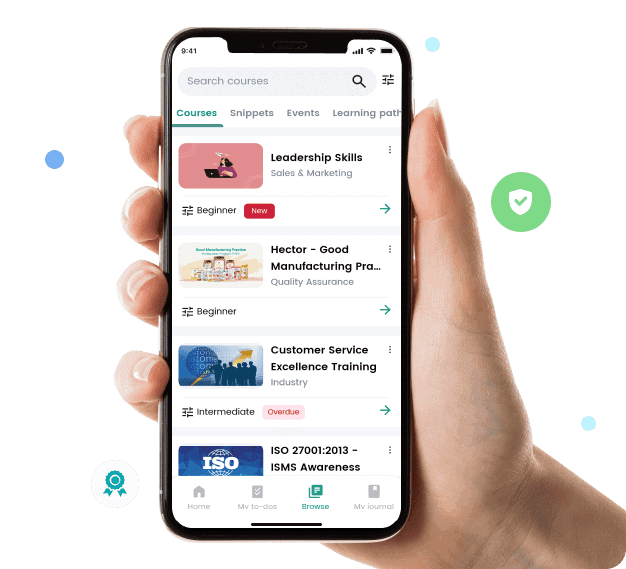The Ultimate Guide to Choosing the Perfect Construction LMS

Construction sites are risky places. They rank second for workplace fatalities across all industries. However, proper training can ensure safety and work efficiency. Although, the dilemma of how to hit the ground running with top-notch training remains. That’s where a construction LMS comes into play. This comprehensive guide will walk you through the top features required in an ideal construction LMS and how to use them to drive an engaging learning culture.
What Is a Construction LMS?
An LMS for construction is like a virtual toolbox for training. It helps companies build a stronger, more skilled workforce. Managers can track everyone’s progress, offer guidance, and sharpen employees’ skills.
How Can a Construction LMS Benefit My Company?
The advantages of using construction are numerous. Let us discuss this in detail.
1. Fewer accidents
Your crews get top-notch training, from spotting hazards to using equipment. That means fewer accidents. Isn’t that what we all want?
2. Work gets done faster and better
Well-trained workers are like a well-oiled machine. They know their stuff, so projects finish on time and within budget. Who wouldn’t want that kind of efficiency?
3. Save money
Forget about flying trainers or printing tons of manuals. All the training your team needs is online and accessible anytime, anywhere. Think about the savings!
4. No compliance headaches
Never ignore rules and regulations. LMS helps you ensure everyone is certified and up-to-date. How much easier would that make your life?
5. Happy workers stick around
Employees stay longer when they feel valued. Training makes them confident and happy about their roles. They prefer to stick with your company. You can save on hiring and training costs.
6. Data-driven decisions
The LMS tracks everyone’s performance and provides data on training effectiveness and areas for improvement. Based on this data, you can change your training and development strategy.
7. Grow with ease
Whether you’re adding a few new hires or expanding, the LMS can handle it without breaking a sweat. How nice would it be to grow without the growing pains?
What Features Should I Look for in a Construction LMS?
When choosing an LMS for the construction industry, here are the key features to focus on:
Content and Customization
- Dynamic Content Delivery: Modern LMSs are ditching boring textbooks and embracing exciting new teaching methods. Instead of just reading documents, learners can now enjoy interactive presentations, videos, and cool graphics. Some even use augmented and virtual reality to bring the learning experience to life.
- Microlearning: Are you familiar with microlearning, where courses are broken into bite-sized modules? Isn’t that an intelligent way to reinforce key concepts without taking too much time out of the workday?
- Mobile Compatibility: Our LMS must be accessible on smartphones and tablets, just as on desktops. This way, your team can learn on the go, even from the job site. This kind of flexibility keeps everything running smoothly, no matter where your team is.
Tracking and Reporting
Look for LMS that provide customized reports for real-time insights into learner performance and progress tracking. It should also integrate with third-party data analysis tools to empower organizations with a comprehensive view of their learning and development initiatives.
Mentoring
When choosing an LMS, look for features that provide comprehensive learner support. This includes access to subject-matter experts for direct guidance, fostering accountability, and goal alignment. A strong LMS should also offer personalized mentorship, where learners receive knowledge sharing, feedback, course recommendations, and progress monitoring for continuous support throughout their learning journey.
User Experience and Engagement
- Intuitive Interface: Nobody wants to struggle with a complicated interface. Shouldn’t your LMS be easy to navigate for both administrators and learners? An intuitive interface can make training a walk in the park.
- Interactive Features: Engaging your learners is key, wouldn’t you agree? Look for features like gamification, quizzes, and simulations. These interactive elements can make learning more enjoyable and effective.
- Social Learning: How about encouraging interaction among your learners? Features like forums or discussion boards can enhance the learning experience. It’s like having a study group at your fingertips.
- Personalized Learning Paths: Every worker has unique needs, right? Does your LMS allow customized learning paths? Does everyone get the training they need when they need it?
Additional Considerations
- Integration: How well does your LMS integrate with other systems? Could we integrate it into HR or project management software? Integration is crucial for a seamless workflow.
- Scalability: Is your LMS scalable? As your company grows, your LMS should grow with it. It should be accommodating more users and more complex needs without a hitch.
- Customer Support: Reliable customer support is a must. How will you handle issues when they arise? Ensure your vendor offers top-notch support and training resources to keep things running.
- Cost: Finally, let’s talk dollars and cents. What’s your budget? Compare pricing models from different vendors to ensure you get the best bang for your buck.
How Does Skill Lake Make an Ideal Construction LMS?
Your construction crews are across different sites. Each employee has their own learning needs. Regulations are constantly changing, and new techniques pop up all the time. How do you keep everyone trained, safe, and on their game?
That’s where Skill Lake comes in. It’s not another online training platform. It’s built for the unique challenges of construction.
Here’s what makes Skill Lake stand out:
1. Tailor-Made Training
Forget cookie-cutter courses. You can create training that is aligned with LMS construction laws and your needs. Need to update safety procedures? Easy. Want to teach a new building method? No problem.
2. Learn Your Way
Some people like to dive solo, while others prefer a guided approach. Skill Lake offers both self-paced and instructor-led learning. Everyone can learn in the way that works best for them.
3. Gamification for the Win
Learning about safety regulations doesn’t have to be a snoozefest. Skill Lake adds a layer of fun with virtual rewards and challenges, making learning feel more like a game than a chore.

4. Built for Collaboration
Do you have experts on your team? Let them share their knowledge! Skill Lake makes it easy for mentors to guide colleagues and for everyone to learn from each other’s experiences.
5. Always Improving
With Skill Lake, you can track who’s completing what and how they’re doing it. This helps you identify skill gaps and tailor training to where it’s needed most.
Bonus Perks
i. Super Easy to Use
The interface is so simple that even the least tech-savvy worker can jump in.
ii. Set Up in a Flash
No need to wait around. Skill Lake is quick to deploy and lets your team learn quickly.
iii. Mobile-Friendly
Want to learn on the go? Skill Lake works on phones and tablets so employees can access training anytime, anywhere.
Conclusion
Every platform has its strengths and weaknesses. Consider what features will support your training goals and identify the fit for your needs. Assess your alternatives to identify one that suits you best. Ask for a demo or free trial to find out which tool is most suitable for your requirements.
Build a culture of continuous learning with Skill Lake’s state-of-the-art people development platform. Give your employees professional training to help them excel in their job roles and propel your business to greater efficiency and success.
Start Today




Roshna R
Roshna is a passionate enthusiast of all things about learning and development. She has an innate flair for crafting thoughtful content and is inspiring eager minds on their learning journey.